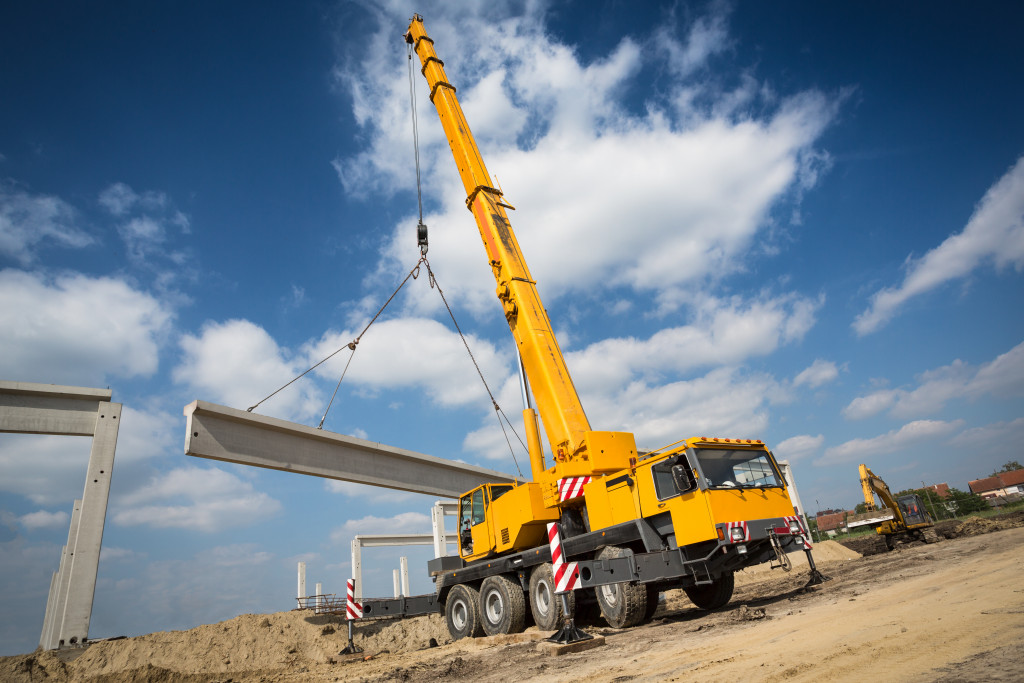- Heavy equipment plays a significant role in the manufacturing sector.
- Protective equipment and gear are a must-have when working with heavy equipment.
- Proper employee training and safety protocols can prevent accidents and fatalities.
- Regular maintenance of heavy equipment is crucial for maximum performance and minimum breakdowns.
- Lack of adequate training and safety protocols are common causes of accidents, which can negatively impact companies.
Heavy equipment ensures efficient production processes in today’s manufacturing industry. These pieces of equipment are designed to tackle the most demanding tasks and significantly reduce the time required to complete each phase of the manufacturing process. Common heavy equipment includes bulldozers, cranes, excavators, loaders, and forklifts.
Statistics show that the manufacturing industry heavily relies on heavy equipment. According to the National Bureau of Statistics, the United States economy greatly depends on the manufacturing sector, which generates about $2.3 trillion in annual GDP. The industry is responsible for creating over 12 million jobs, making it one of the largest employers in the US.
It’s essential to note that using heavy equipment comes with significant risks. These machines’ size, weight, and moving parts are hazardous if incorrectly handled. Here are a few tips to help ensure safety when working around heavy equipment:
Protective Equipment and Gear

When dealing with heavy equipment, it’s crucial always to prioritize safety. One of the most important ways to do this is by using protective equipment and gear. It is not only essential to ensure the safety of the workers but also a legal requirement in many states. Here are the essential protective equipment and gear items that must be used when working with heavy equipment:
Hard Hats
Hard hats are crucial protective gear that has the potential to save a worker’s life. These hats protect the head from falling objects or materials that may cause severe head injuries. According to the Occupational Safety and Health Administration (OSHA), hard hats should meet the American National Standards Institute (ANSI) requirements for head protection.
Eye and Face Protection
Eye and face protection equipment are necessary when working around heavy equipment, preventing debris or dust from flying into a worker’s eyes. Flying objects can cause permanent eye injuries, leading to blindness in severe cases. This protective gear includes goggles, face shields, and safety glasses.
Protective Clothing
Protective clothing is essential to protect workers from bodily harm. It includes high-visibility clothing, gloves, steel-toed boots, and clothing made from cut-resistant materials. Protective clothing shields workers from contact with moving equipment parts, which may cause injuries. Protective clothing should be designed to fit correctly and comfortably, maximizing protection without interfering with mobility.
Hearing Protection
According to the Occupational Safety and Health Administration (OSHA), hearing protection is required when an employee is exposed to noise above 85 decibels for an extended period. Heavy equipment produces high noise levels that may lead to hearing loss if unprotected. Earplugs, earmuffs, or headphones are all suitable protection options.
Operational Safety Procedures
Besides using protective gear, employee training and safety protocols are crucial to minimizing risks when working with heavy equipment. Workers must be trained to operate and maintain the equipment properly, including identifying potential hazards and taking necessary precautions. OSHA requires employers to properly train employees when working in hazardous conditions or dealing with dangerous materials.
Statistics reveal that lack of proper training and safety protocols are common causes of accidents in the manufacturing industry. According to Safety+Health Magazine, about 15% of all manufacturing industry deaths are attributed to contact with equipment, with a significant number of fatalities caused by inadequate employee training or unsafe work practices. Additionally, injuries and deaths from heavy equipment accidents lead to high medical costs and decreased productivity, negatively impacting the company’s bottom line.
To ensure employee safety, companies should develop and implement comprehensive safety protocols that address every aspect of working with heavy equipment. These protocols should include regular equipment inspections and effective worker communication to prevent accidents. Companies should also pay attention to the work environment, ensuring safety and proper warning signs are in place. Getting an indicator light for every piece of equipment will also help monitor them appropriately and alert any malfunction.
Equipment Maintenance
In addition to employee training and safety protocols, regular heavy equipment maintenance is essential for maximum performance. Equipment operators should inspect the machines before each use, checking for any signs of wear or tear. Regular maintenance helps prevent accidents and breakdowns that can lead to costly repairs and downtime.
Proper safety measures can prevent injuries, save lives, and keep production costs low when working with heavy equipment. With appropriate training, protective gear, operational safety procedures, and regular maintenance of the machines, employers can ensure their employees are safe while ensuring their company continues to be productive.
Final Thoughts
When working with heavy equipment, safety should always be the top priority. Employees can protect themselves from hazards by following safety protocols and procedures while ensuring maximum productivity.






